Solar Motifs

The sun, giver of light and life

Among the oldest and most important motifs found on pysanky are those representing the sun. As Shcherbakivsky wrote:
На Великдень, тоб то, коли день стає більще ночі, коли сонце посідає уже повну свою силу, тодї і знаки сонця також набувають більше силу, і пианка, тоб то айце,покрите знаками сонця, являється найкращим апотронейоном (чортогоном) проти усякої нечистої сили (мари, мани, хороби і т. д.). І звичайно дівчина не могла подарувати свому милому ічого цінніщоо від сего талісмана.
“On Velykden, that is, when the day becomes longer than the night, when the sun attains its full strength, then solar symbols also become much stronger, and the pysanka, that is an egg, covered with solar symbols, is the best apotropaion (“devil chaser”) against all sorts of evil spirits ( ghosts, specters, diseases, etc.). And of course a girl could not give her sweetheart anything more valuable that this talisman.’
The sun was rendered on pysanky because it was at the center of the spring celebration; after a long, dark winter, the sun would return, with its life-giving rays.
Sun symbols can be encountered widely on all the territories of Ukraine, and in civilizations through out history, dating back to the Paleolithic Era. The Solar cult was particularly important to our ancestors, and Dazhboh (the sun god) was one of the main gods of the pagan pantheon. Belief in the sun god, and fear and worship of him persisted well into the Middle Ages. Because of this, people wrote sun symbols on pysanky, in the form of circles, eight-pointed stars, crossed lines with curled ends, circles with rays. These symbols had the names “ruzhi (ружі),” “spiders (павуки),” sleeves (рукави),” “grandfather’s sleeves (дідові рукави).” Among the oldest sun symbols are “tripod/trynih (триніг),” and crosses in their various forms,
The simplest rendering of the sun is a closed circle with or without rays.
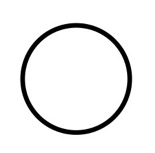
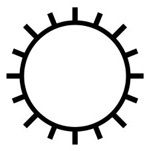
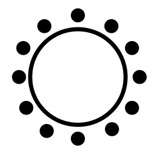
Examples of such suns can be seen in these pysanky, from and western Podillia:


Pysanky from all regions of Ukraine depict an eight-sided star, the most common depiction of the sun; this symbol is also called a "ruzha."
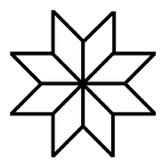
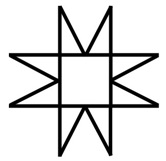
Examples of eight-pointed stars abound on pysanky. As Vira Manko points out, this motif could represent many heavenly bodies. If it decorated both sides of a pysanka, it symoblized the sun; if there were many such motifs, they represented stars. You can solar versions of the ruzha motif in these examples from Volyn, central Halychyna, and the Poltava region:



As Shcherbakivsky noted in his work «Основні елементи орнаментації українських писанок», mot motifs can take two forms, a geometric one and a phytomorphic (plant-like) one. Phytomorphic versions of the eight pointed ruzha are commonly found on pysanky, as in these examples from the Hutsul, Kyiv and Kharkiv regions:

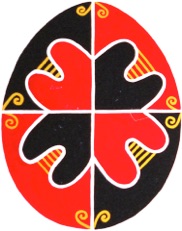
The eight-pointed star is seen less commonly among the Lemkos, where a round, multi-pointed version is preferred (see below). This is an example of the less common version:

Six- or seven-sided stars can also be seen, but much less commonly.
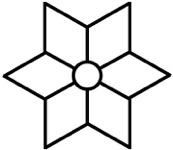
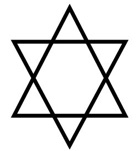
Selivachov provides an example of a pysanka with a geometric 6 pointed star from the Chernihiv region, and Binyashevsky provides an example of a floral version from the Kyiv region:
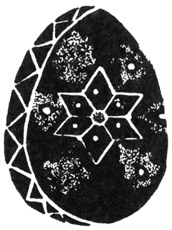

Stars can have nay number of points, although they are usually represented with eight. Below is an examples of a geometric ruzha from Zaporizhia with 13 (or more) points:

Floral ruzhas can also have various numbers of points. The two pysanky below, one from Nyzhniy Bereziv (Hutsul) and the other from Zakarpattia, have seven and twelve points respectively.


Among the Lemkos, this floral sun/ruzha is often written using drop pull, as in these examples below:


Among the oldest representations of the sun are the tripod and the cross (below). The tripod depicts three rays of sun originating from one central point; the lines can be straight but are more often curved in a single direction. It is called a trynih (триніг, three foot), also known as a triquetrum (тригвер, тригверт). Below are examples of the trynih motif:

These three pysanky show examples of a simple geometric trynih from Kurshchyna, Nyzhniy Bereziv (Hutsul) and the Odesa region:



This more complex version from Western Podillia, incorporates ancient pagan zmiya/serpent motifs (curl with a crown) that are typical for that region.

The trynih can be represented in phytomorphic form, as either a flower or, more commonly, as a trylyst (трилист, three leaf). These areß two examples are from Eastern Polissia and the Kyiv area:


The cross is one of the oldest of all the sun symbols, and its use goes back to the era of sun worship. Per Manko and Chaika, the sun was believed to be a bird flying across the sky, and was depicted by a simple cross, with one bar being the body, and the other the wings.

Crosses on pysanky are usually more complex and ornate than the simple cross above (see “Crosses” for a more detailed analysis). Examples of crosses include the ones below, with geometric (Kherson region), phytomorphic (Chornyi Potik, Hutsul) and Lemko/drop-pull (Priashiv) variants:



The swastika is an ancient symbol, found in many cultures, and called in Ukrainian a "svarha," after the main Slavic god of the heavens, Svaroh. The svarha had the same meaning as a cross, but different in that it depicted the movement of the sun across the sky. The svarha can be made of straight lines but, on pysanka motifs, usually has curved arms instead.
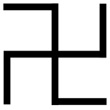
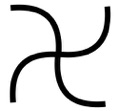
Vira Manko gives these examples of svarha motifs found on pysanky:

The svarha is given many names in local parlance; it can be a windmill (вітряк/vitriak), and is also referred to as a broken cross, willows, magpies or ducks’ necks. Examples from Binyashevsky below demonstrate the variety. These pysanky are from
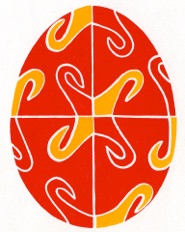
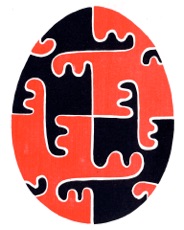
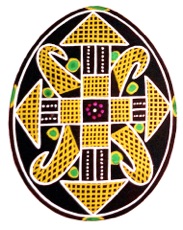
The first pysanka is from the Kyiv region, and displays a simple svarha; it is called “Magpies,” according to Binyashevsky. The middle pysanka is from western Podillia; in it the svarha is converted to a series of endless lines, bezkonechnyks; it is called “Gypsy Roads.” The third pysanka is from Pokuttia, and shows a svarha overlaying a cross. (More information on the svarha here.)
While early Ukrainians thought the sun was a bird that flew across the sky, the later Slavic pagans believed that the sun did not rise on its own, but was carried across the sky by a stag (or, in some versions, a horse). The deer and horses often found on Hutsul pysanky are solar symbols.
Pysanky with sun motifs were said to have been especially powerful, because they could protect their owner from sickness, bad luck and the evil eye.

Back to Cosmomorphic Gallery page.
Back to MAIN Symbolism home page.
Back to MAIN Pysanka home page.
Back to Pysanka Index.
Search my site with Google




